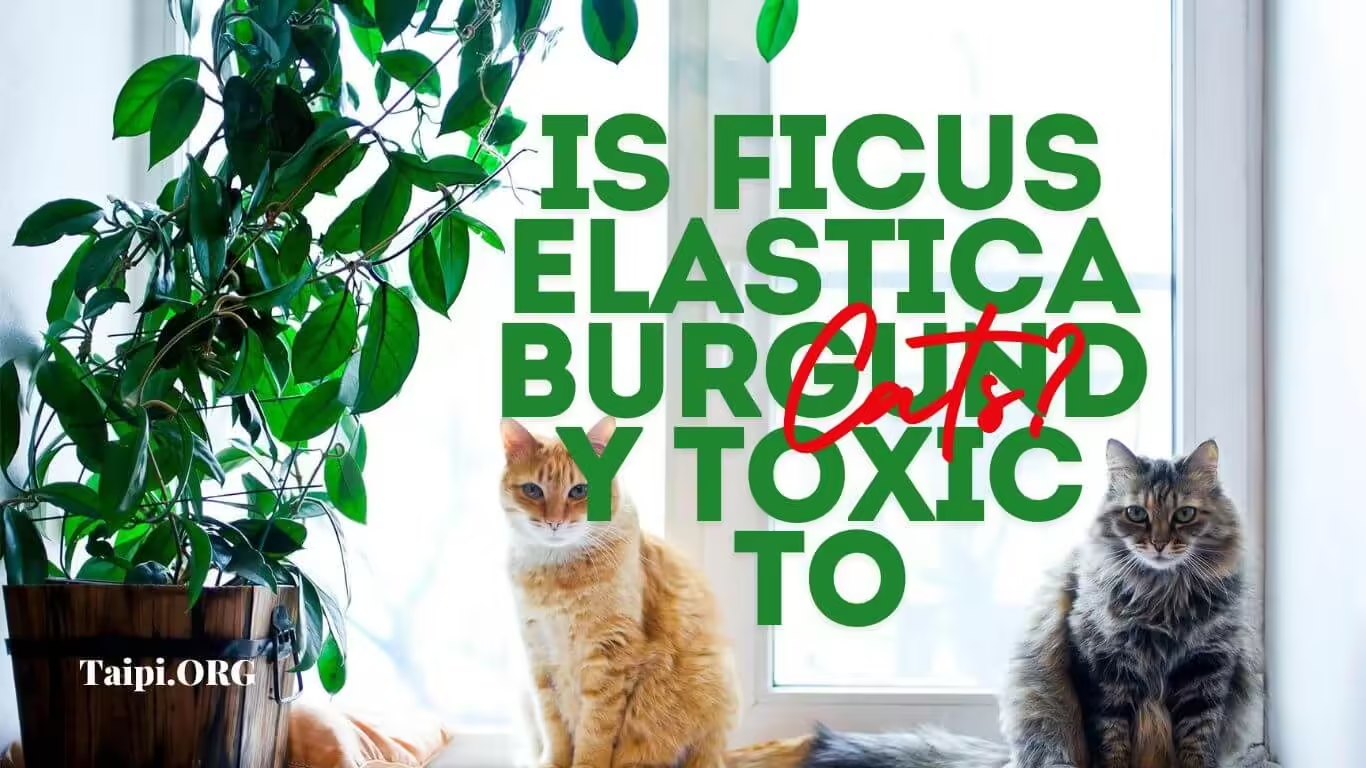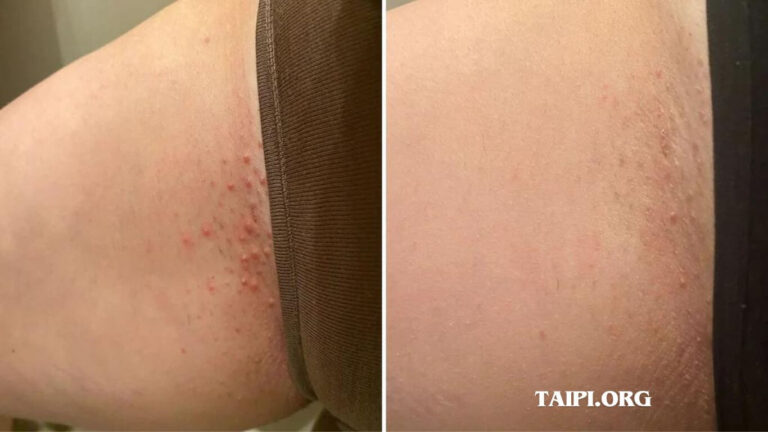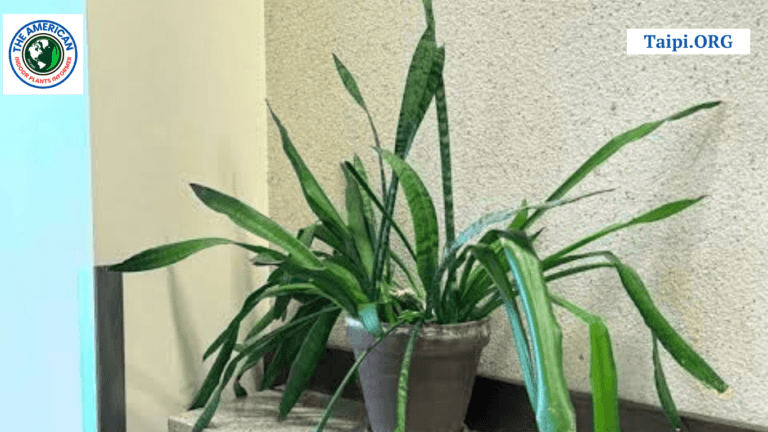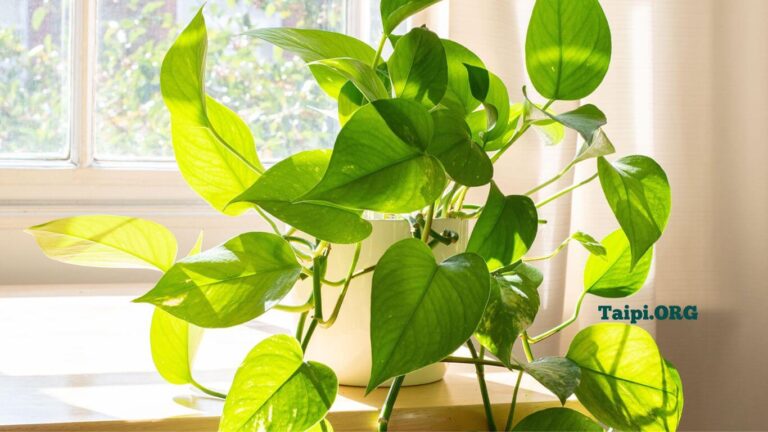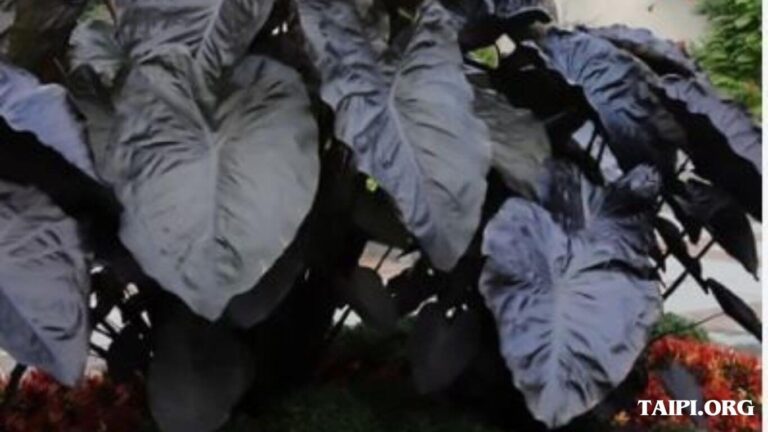Is Ficus Elastica Burgundy Toxic to Cats?
FICUS ELASTICA, commonly known as the Rubber Plant, is a popular houseplant thanks to its glossy, deep burgundy leaves and minimal care requirements. Among the various varieties, the Ficus Elastica Burgundy stands out for its striking foliage, adding a touch of elegance to any indoor space. However, as with many houseplants, pet owners need to be aware of the potential risks it poses to their furry companions, thus; begging the question: is Ficus elastica Burgundy toxic to cats? Or, are burgundy rubber plants toxic to cats?
A Short Story About Ficus Elastica Burgundy
In the heart of a bustling city, Jane, an avid plant enthusiast, transformed her apartment into an urban jungle. Among her collection, the Ficus elastica Burgundy was her pride and joy. With its broad, dark leaves glistening in the sunlight, it was the centerpiece of her living room.
However, Jane’s cat, Whiskers, was equally intrigued by this exotic plant. One day, Jane returned home to find Whiskers nibbling on a fallen leaf. Alarmed, she quickly researched whether her beloved Rubber Plant could harm her curious feline friend.
What Toxic Material is in Ficus Elastica Burgundy?
The Ficus elastica Burgundy contains a milky sap known as latex, which can be irritating. This latex contains several compounds that can cause adverse reactions, including ficin and ficusin. These compounds are designed to protect the plant from herbivores in its natural habitat, but they can also pose a threat to domestic pets.
Is Ficus Elastica Burgundy Toxic to Cats?
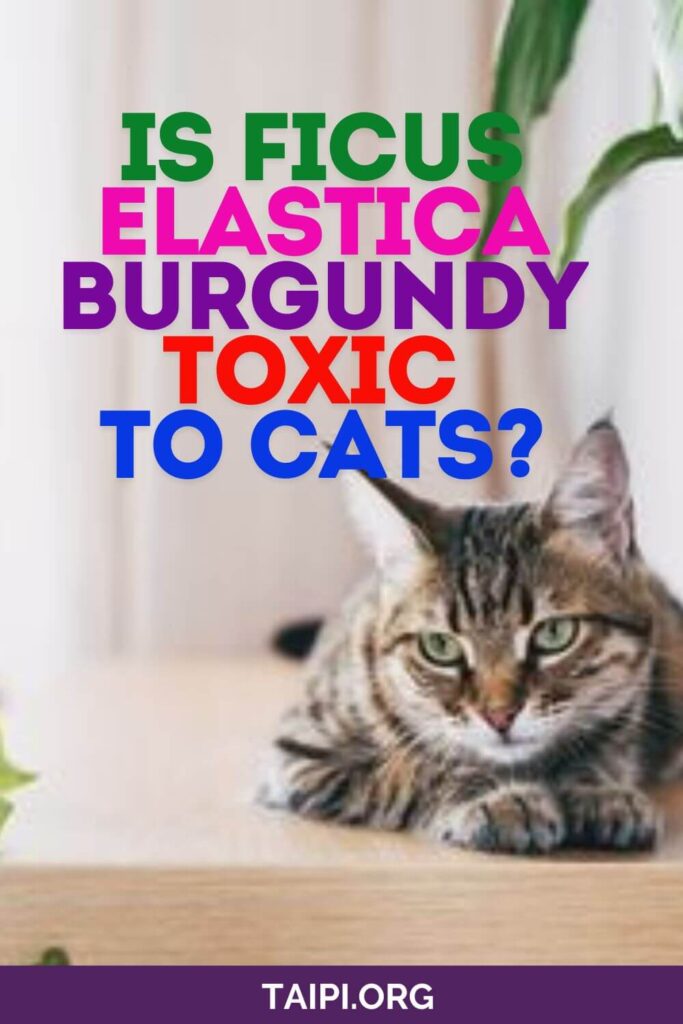
Yes, Ficus elastica Burgundy is toxic to cats. When cats ingest parts of the plant, they may experience symptoms such as drooling, vomiting, and diarrhea.
In some cases, contact with the plant’s sap can cause skin irritation. The severity of these symptoms can vary depending on the amount ingested and the size or age of the cat.
Related articles:
Symptoms of Ficus Elastica Burgundy Toxicity in Cats
If a cat bites or ingests Ficus elastica Burgundy, it can exhibit various symptoms of toxicity. If you own a cat or a dog, it’s important to recognize these signs and seek veterinary assistance promptly.
Here are the common symptoms associated with Ficus elastica Burgundy toxicity in cats:
Gastrointestinal Symptoms
Drooling: Excessive drooling or hypersalivation is a common initial sign of ingestion.
Vomiting: Cats may vomit after chewing on the plant, which helps expel the toxic material from their system.
Diarrhea: Gastrointestinal upset can also lead to diarrhea, causing dehydration if prolonged.
Loss of Appetite: Affected cats may refuse to eat due to nausea and discomfort.
Oral and Throat Irritation
Mouth Irritation: Chewing on the plant can cause irritation and inflammation in the mouth, leading to pawing at the mouth or face.
Swelling: Swelling of the mouth, tongue, and throat can occur, making it difficult for the cat to swallow or breathe.
Skin Irritation
Redness and Swelling: If the plant’s sap falls on the cat’s skin, it can cause redness, swelling, and itching.
Dermatitis: Prolonged contact with the sap may lead to dermatitis, characterized by inflamed, itchy, and sometimes blistered skin.
Respiratory Symptoms
Coughing and Gagging: If a significant amount of sap is ingested or inhaled, it can cause coughing and gagging.
Breathing Difficulties: Swelling in the throat can lead to respiratory distress, manifesting as wheezing or labored breathing.
What to Do If Your Cat Shows Symptoms
If you notice any of these symptoms in your cat and suspect they have ingested Ficus elastica Burgundy, it is essential to take these immediate actions:
Remove Access: Ensure your cat no longer has access to the plant to prevent further ingestion or contact.
Rinse the Mouth: If possible, rinse your cat’s mouth with water to remove any remaining plant material.
Contact Your Veterinarian: Call your veterinarian or an emergency veterinary clinic immediately. Provide details about the plant and the symptoms your cat is experiencing.
Bring a Sample: If you can, bring a sample of the plant to the veterinarian for accurate identification and appropriate treatment.
Cat-Friendly Indoor Plants
Here are some of the cat-friendly indoor plants to consider:
- Spider Plant (Chlorophytum comosum) – Known for its air-purifying qualities and easy care.
- Areca Palm (Dypsis lutescens) – A tropical plant that adds a touch of greenery without posing a risk to cats.
- Boston Fern (Nephrolepis exaltata) – A lush, classic houseplant that is safe for cats.
- Parlor Palm (Chamaedorea elegans) – A small, easy-to-grow palm that is non-toxic to cats.
- Ponytail Palm (Beaucarnea recurvata) – Despite its name, it’s not a true palm, but it is safe for cats.
- Calathea (Calathea spp.) – Known for their stunning, patterned leaves, these plants are non-toxic to cats.
- Prayer Plant (Maranta leuconeura) – Another plant with striking leaves, safe for feline friends.
- Bamboo Palm (Chamaedorea seifrizii) – Adds a tropical feel to your home and is safe for cats.
- African Violet (Saintpaulia) – These flowering plants are safe for cats and add a pop of color.
- Haworthia (Haworthia spp.) – A type of succulent that is non-toxic to cats and easy to care for.
- Phalaenopsis Orchid (Phalaenopsis spp.) – Beautiful and safe for cats, making them a great choice for indoor decoration.
- Christmas Cactus (Schlumbergera spp.) – A festive, non-toxic plant that blooms in winter.
- Cast Iron Plant (Aspidistra elatior) – Hardy and low-maintenance, perfect for households with pets.
Frequently Asked Questions (FAQs)
Q: What are the signs of Ficus elastica Burgundy toxicity in cats?
A: Cats that have ingested parts of the Ficus elastica Burgundy may exhibit symptoms such as drooling, vomiting, diarrhea, and loss of appetite. If the plant’s sap falls on the skin, it can cause redness and irritation.
Q: How can I prevent my cat from eating houseplants?
A: To prevent your cat from chewing on houseplants, place the plants in areas that are inaccessible to your cat. You can also use deterrents such as bitter sprays on the leaves or provide your cat with safe, alternative plants like cat grass to chew on.
Q: What should I do if my cat has ingested Ficus elastica Burgundy?
A: If you suspect your cat has ingested any part of the Ficus elastica Burgundy, it is important to contact your veterinarian immediately. Provide them with information about the plant and any symptoms your cat is experiencing.
Q: Are there any cat-safe alternatives to Ficus elastica Burgundy?
A: Yes, several plants are safe for cats, including spider plants, Boston ferns, and areca palms. These plants can add greenery to your home without posing a risk to your pets.
Final Thoughts
Recognizing the symptoms of Ficus elastica Burgundy toxicity and responding swiftly can significantly improve your cat’s chances of a full recovery.
Preventive measures, such as choosing cat-safe plants and keeping toxic ones out of reach, are essential for a safe and pet-friendly home environment.
If in doubt about the safety of a plant, always consult your veterinarian or refer to reliable resources on pet-safe plants.
Your vigilance can ensure your feline friend enjoys a healthy, happy life alongside your indoor garden.

